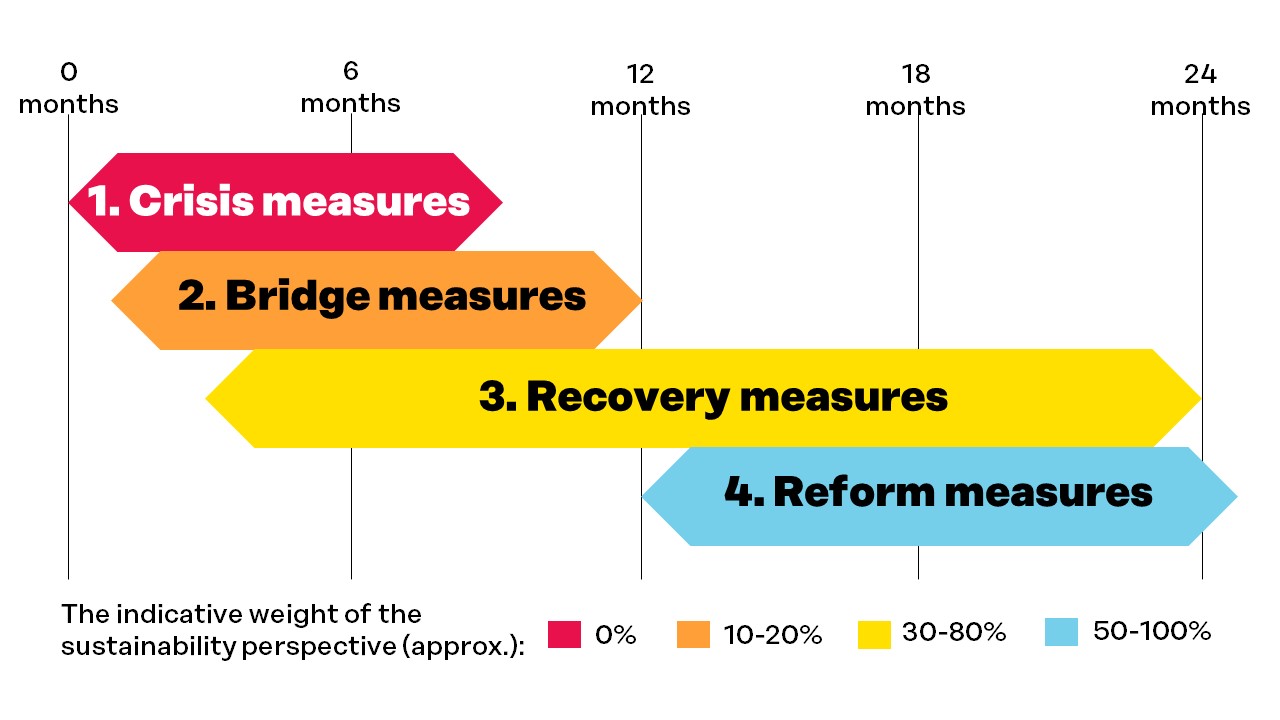Key decision-makers, ranging from the Finnish Government (see Government press release) to the European Commission (see Von der Leyen outlines a path to European recovery), have outlined that the recovery measures following the coronavirus pandemic must also be environmentally sustainable. But how should the different alternatives be structured?
Sustainable recovery measures can be divided roughly into three categories. In the first one, public funds are allocated directly or indirectly to investments or operating expenditure such as rail infrastructure projects or the installation of solar panels.
In the second category, taxation is used to help recovery through measures such as immediate reductions in the taxation of work or an agreement to increase environmental taxes after the crisis has subsided. The third category seeks to create further impetus by making changes to regulations – for example, by speeding up the process of granting licences for renewable energy projects.
Sustainable recovery measures are aimed at a maximum impact from the point of view of both the economy and the environment. The different measures can be placed in a four-field diagram, in which environmental benefits are on one axis and economic benefits on the other. Naturally, activities should primarily be selected from the field in which the benefits are great from both perspectives.
For example, stepping up the energy renovation of buildings has often been regarded as a good method because it provides a great deal of employment and produces long-term climate benefits. In our neighbouring country Estonia, the government’s renovation subsidies have been estimated to largely repay themselves in the form of tax revenue and employment (see the article in ScienceDirect’s publication Energy and Buildings).
The timing is crucial for recovery. The measures required for defeating the coronavirus crisis can be divided into four partly overlapping stages.
- Crisis measures. In the middle of the crisis, the priority is to look after people’s health and safety – even at the expense of other objectives, if necessary. When hospitals urgently need supplies, we cannot start to count the emissions caused by their production.
- Bridge measures. Direct bridge measures are aimed at carrying companies and employees across the worst impacts of the coronavirus restrictions. At this stage, priority must be given to avoiding bankruptcies and dismissals, which is why immediate action is needed – not difficult application processes or strict environmental conditions.
- Recovery measures. Once the worst has passed, we will need measures to support the economy and employment in the long term. From the very beginning, they should be planned to also contribute to solving the climate crisis and other burning sustainability issues. (See Sitra’s working paper Sustainable recovery measures for the coronashock)
- Reform measures. Once we have recovered from the recession caused by the coronavirus crisis, there will be a need to balance the public finances and reform the structures in the long term. These measures too can be built to accelerate Finland’s transition to a carbon-neutral and environmentally friendly circular economy, for example, by cutting environmentally harmful subsidies and increasing investments in research and development.
Figure 1: Outlined sequence of measures

The government has appointed several working groups to explore the route out of the coronavirus crisis. The steps should now be chosen carefully and the long journey should be structured so that we will reach the right goals at the right time.

















Recommended
Have some more.